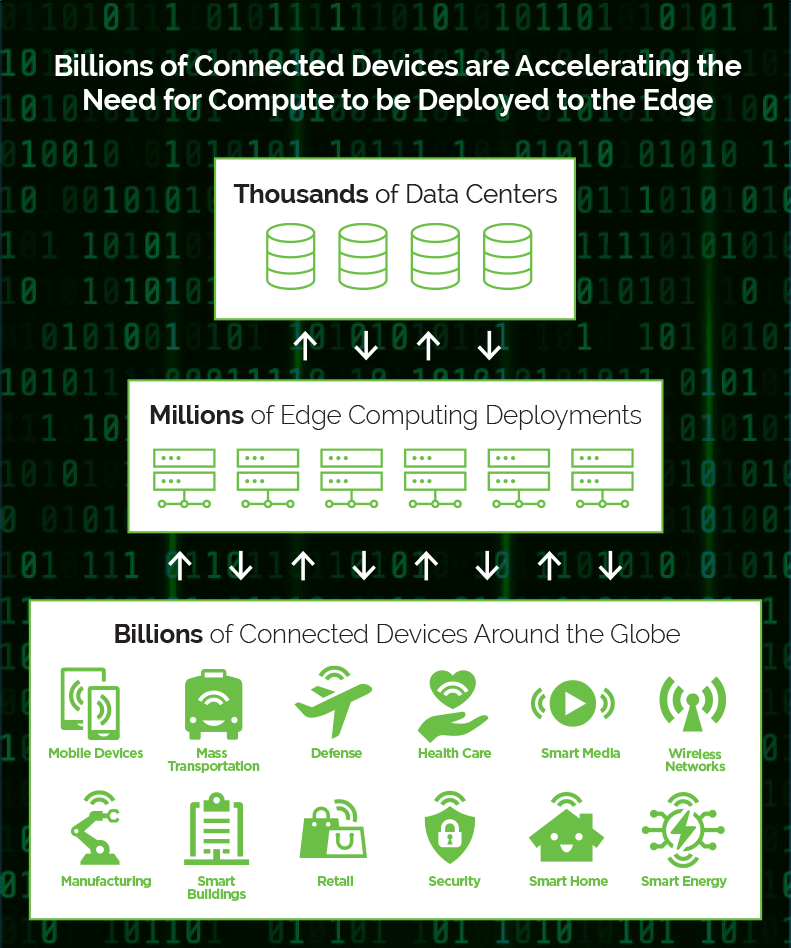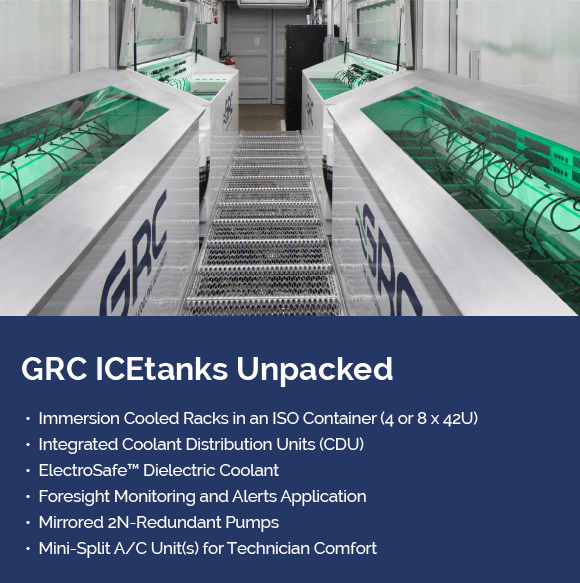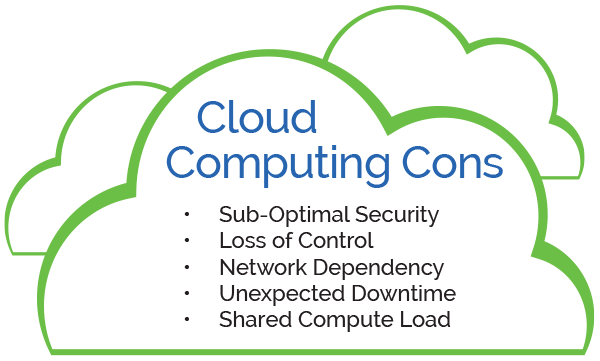If you’ve already read Parts 1 & 2 of our “When Does Immersion Cooling Make Sense?” blog series it’s hard not to conclude that single-phase immersion cooling technology solves most of the big-picture challenges facing data center operators today: issues relating to CAPEX and OPEX, energy efficiency, capacity. expanding next-gen application platforms, and more.
As the final icing on the cake, here are three more cases illustrating when liquid immersion cooling makes a whole lot of sense.


Real-world “edge” deployments can easily become a genuine hurdle when you consider speed of deployment, lack of existing infrastructure and the often sub-ideal conditions awaiting them at the construction site.
The goal of edge computing is to reduce latency by situating sufficient computing power as close to transactions as possible. The challenge is that some of those places are “off the grid,” so to speak, amid significantly suboptimal conditions and environments. For sure, things like extreme ambient heat, high humidity and airborne particulates cannot only unleash hell on IT assets. They can make edge computing an outright no-go.
Experience the Reality of
Immersion Cooling
To paraphrase one of my favorite movies, The Matrix, what if we told you there was a way to place easily expandable edge computing power practically anywhere on terra firma with the confidence you would be up and running in just 10 weeks? Moreover, with few if any worries about environmental issues.
What if all you needed to supply was water, electricity and an Internet connection and we could promise you as much as 800 kW of edge computing performance boxed up in one small, state-of-the-art package?1


Flying High for the USAF
That’s essentially what our ICEtank™ containerized solutions provide. And we have a very high-visibility client who can verify it. Given its ongoing need to deploy remotely controlled computing power in faraway, often forbidding locales – with minimum personnel and support, the U.S. Air Force went full throttle when they heard about our modular, containerized ICEtanks.
Ultimately, our work has helped them achieve 100% HPC uptime for three years and counting with a 93.1% reduction in cooling power for a 1.037 PUE.


Overcrowding can make city life stressful, and can pose big problems for data center operators, too. The culprits? More shared compute time requests. That, plus the trend toward high-density computing spawned by apps like AI or IoT, machine – or deep learning and more. (15 kW racks may soon be ancient history.)
It’s a real dilemma with several possible solutions, the most radical of which is rebuilding a completely new high performance-capable data center within your current footprint. The easiest? Moving operations to the cloud. Yet, the latter, while seductive in its simplicity, can present security and other issues your organization may not be able or willing to sidestep, like having to share time with other cloud users.
Embrace a Pack Mentality
Immersion cooling makes tackling the density dilemma surprisingly easy. Because of the great heat-carrying capacity of liquid (1,200X that of air), and the fact such systems require none of the big CRACs, CRAHs or raised floors conventional centers do, GRC solutions make it easy to deploy capacity quickly, incrementally and cost-effectively. Want to go with mixed-density racks or rows? No problem. Or maybe you’d like to add a new dedicated on-premise HPC “pod” just for next-gen apps. Immersion cooling is a great solution in both cases.
GRC ICEraQ micro-modular, immersion cooling solutions can be placed in virtually any indoor location – even those with no supporting infrastructure. They can easily tie into most any existing infrastructure while delivering up to 200 kW of compute power per rack in a much smaller footprint.
But what if you’ve completely run out of space indoors? Well, our ICEtanks are convenient “data centers in a box.” These 20 or 40-foot ISO containers come with four or eight preconfigured, 42U, immersion cooled racks, respectively, and can be placed anywhere outside. That includes harsh environments fraught with soaring temperatures and blowing sands or the relative tranquility of your parking lot. (Hint: the CEO’s spot is off limits.) All you need is water, electrical and networking.
For all their convenience, ICEraQ systems are hardly wimpy. Starting in 2009, the Texas Advanced Computing Center (TACC) enlisted GRC to help them build up computing power for what would ultimately yield one of the world’s fastest (and greenest) TOP500 supercomputers, Frontera. Our initial deployment involved an ICEraQ on their loading dock, and they effortlessly added racks over the years as their computing needs grew.


Despite its attractions, some people have their head in the cloud when it comes to using that very same technology to overcome data center challenges. Yes, the cloud makes it easy to slough off scalability and maintenance concerns. Yes, it’s great for multilocation enterprises. But the cloud isn’t for everyone.
Security, shared time, downtime and other issues make the cloud unsuitable for some organizations. The U.S. military is one – and for good reason: increasingly, warfare is a data-driven undertaking. Distributed enterprises are another example of why the cloud is not a panacea, as many firms are reluctant o relinquish control of highly sensitive proprietary data and applications.
Hey, You, Stay Off of the Cloud
If you can’t go to the cloud, capacity planning becomes much more complicated as well. Lead time for IT development is often measured in years when design, approvals and build-out are taken into consideration. This generally necessitates “guessing the future,” making it easy to over-plan, which misappropriates budget. But longterm projections can also cause you to err on the other side and underplan. That can truly hobble an organization, as corporate fortunes are increasingly tied to IT. Despite these burdens, there’s intense pressure on infrastructure and operations pros to “get it right.”
raQ Up Serious Benefits
GRC’s liquid immersion cooling solutions take the calculus, luck, psychic powers and crystal ball out of the capacity planning process. Our systems make it easy to deploy capacity quickly, cost-effectively and incrementally in accordance with computing demands.
Have a spare room, basement or a loading dock? Any space – even without a data center infrastructure – will support our ICEraQs. And, our completely self-contained ICEtanks can be placed anywhere outside, even in the harshest environments. These efficient, low-cost units enabled the U.S. Air Force to drop compliant computing power right outside their Hill AFB data center in Utah and save money by tapping into existing power, Internet and water resources. Both can tie into any existing warm or chilled water system.
1 Utilizing a chilled water system.
Does Liquid-Immersion Cooling Make Sense for YOUR Data Center?
We’d be surprised if it didn’t. Why not send us an email at info@grctesting.xyz and find out for certain? A GRC associate will reach out and run the numbers for you. Call 1.512.692.8003. Read When Does Liquid-Immersion Cooling Make Sense? — Part 1 & Part 2










